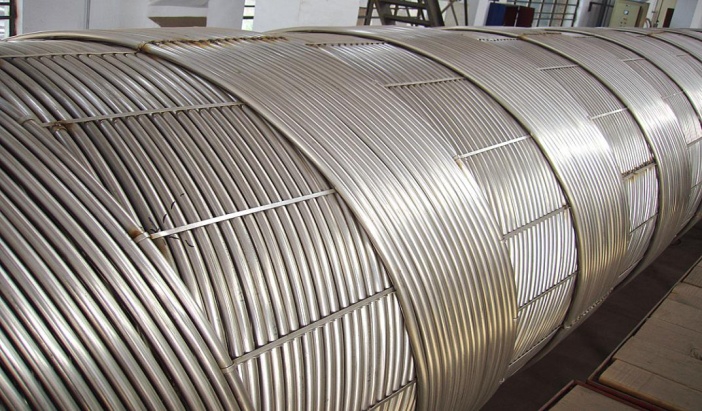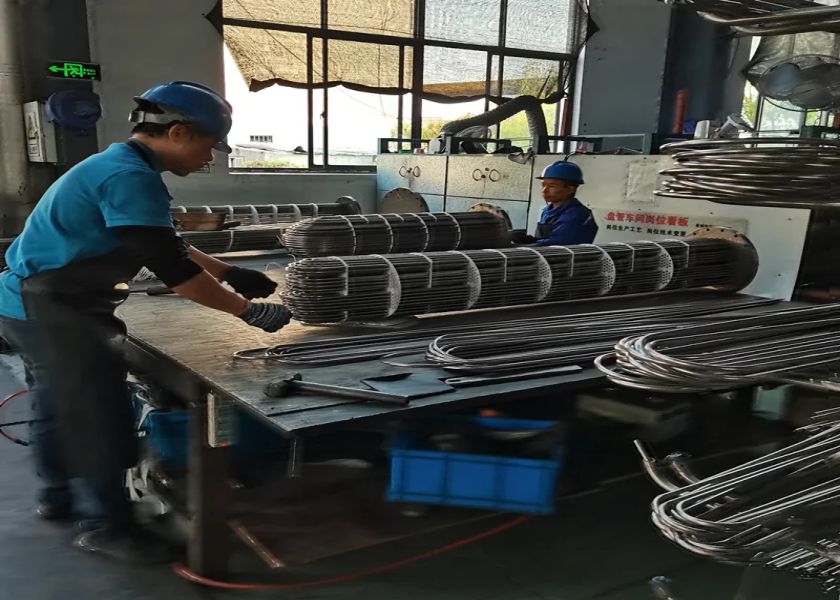What is spiral wound cylindrical heat exchange?
A spiral wound cylindrical heat exchanger is a type of heat exchanger that uses a spiral design to maximize heat transfer between two fluids. The heat exchanger consists of two concentric cylinders, with one cylinder wound in a spiral pattern around the other. The inner cylinder is typically a solid tube, while the outer cylinder is a hollow shell.
304/304L spiral wound heat exchanger
The two fluids flow through the heat exchanger in a counter-current or co-current manner, depending on the specific design. Heat is transferred from one fluid to the other through the walls of the spiral-wound cylinder.
This type of heat exchanger is commonly used in applications where space is limited, such as in chemical processing, power generation, and HVAC systems. Spiral wound cylindrical heat exchangers have a high heat transfer rate due to their large surface area and turbulent flow, making them efficient and effective in transferring heat between fluids.
304/304L spiral wound heat exchanger
Spiral wound tube array heat exchanger is mainly used in the flue gas waste heat recovery, vacuum system exhaust recovery, large flow of gas heating or heat recovery, coal mine air cooling dehumidification and other technological points, has the following characteristics:
1, Using a unique spiral wound tube array tube bundle structure, tube bundle arrangement is reasonable and uniform distribution, high heat transfer efficiency;
2, Shell side circulation area, flow resistance is small, especially suitable for high flow, low pressure drop requirements conditions;
3, Reasonable distribution of the tube bundle so that the uniform distribution of shell gas and produce a stronger turbulence effect, to avoid the heat transfer dead ends, greatly reducing the tendency of dust settling, delay deposition time;
304/304L spiral wound heat exchanger
4, Compared to the traditional heat exchanger, light weight, fast installation, easy maintenance later.
However, they can also be more complex to design and manufacture than other types of heat exchangers, and may require more maintenance due to their intricate design.
Post time: Apr-21-2023


